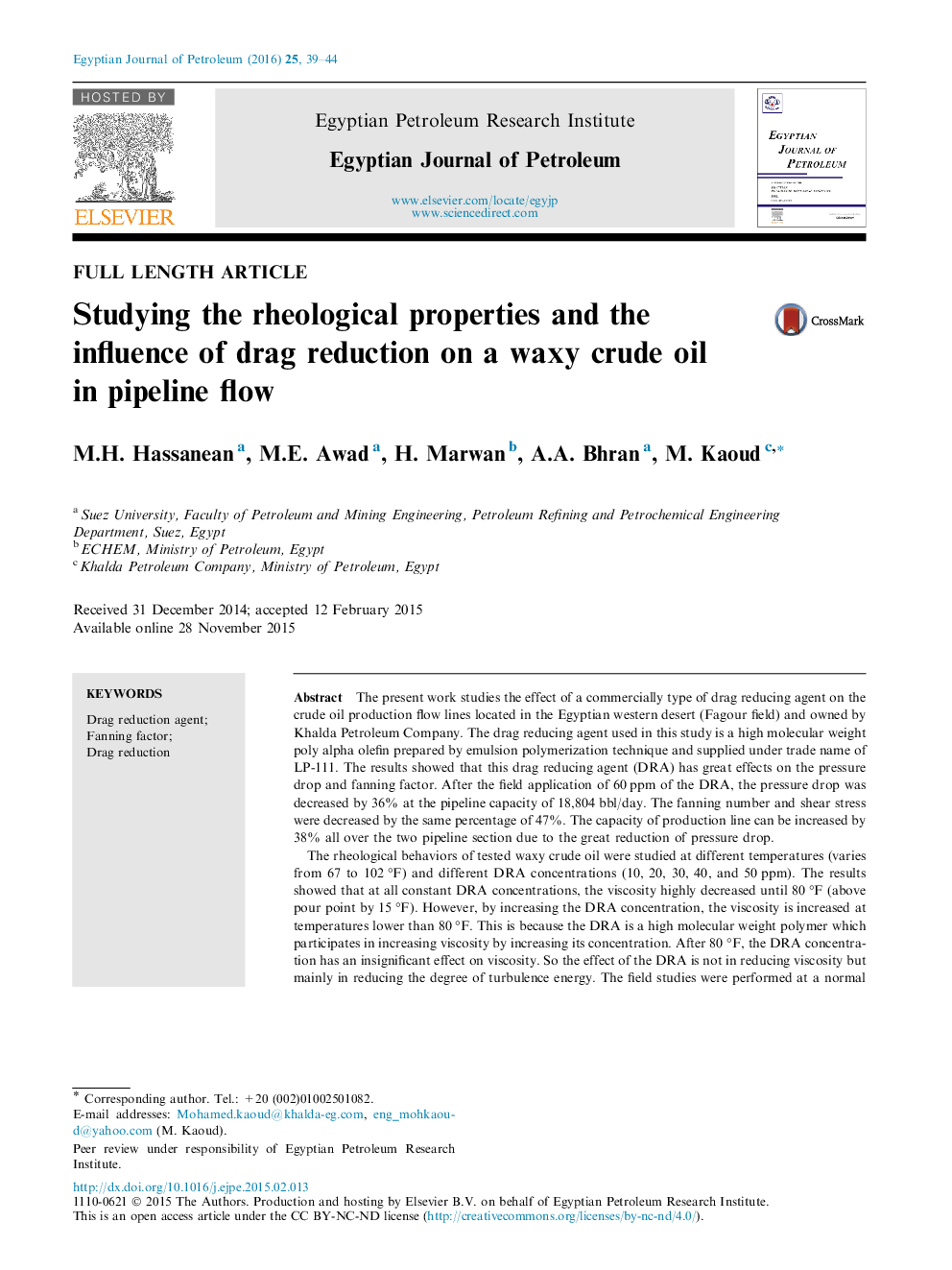| Article ID | Journal | Published Year | Pages | File Type |
|---|---|---|---|---|
| 1756794 | Egyptian Journal of Petroleum | 2016 | 6 Pages |
The present work studies the effect of a commercially type of drag reducing agent on the crude oil production flow lines located in the Egyptian western desert (Fagour field) and owned by Khalda Petroleum Company. The drag reducing agent used in this study is a high molecular weight poly alpha olefin prepared by emulsion polymerization technique and supplied under trade name of LP-111. The results showed that this drag reducing agent (DRA) has great effects on the pressure drop and fanning factor. After the field application of 60 ppm of the DRA, the pressure drop was decreased by 36% at the pipeline capacity of 18,804 bbl/day. The fanning number and shear stress were decreased by the same percentage of 47%. The capacity of production line can be increased by 38% all over the two pipeline section due to the great reduction of pressure drop.The rheological behaviors of tested waxy crude oil were studied at different temperatures (varies from 67 to 102 °F) and different DRA concentrations (10, 20, 30, 40, and 50 ppm). The results showed that at all constant DRA concentrations, the viscosity highly decreased until 80 °F (above pour point by 15 °F). However, by increasing the DRA concentration, the viscosity is increased at temperatures lower than 80 °F. This is because the DRA is a high molecular weight polymer which participates in increasing viscosity by increasing its concentration. After 80 °F, the DRA concentration has an insignificant effect on viscosity. So the effect of the DRA is not in reducing viscosity but mainly in reducing the degree of turbulence energy. The field studies were performed at a normal temperature of tested pipeline sections (100 °F). The tested DRA has an improving effect on reducing the pressure drop of pipeline which leads to reduction in crude oil pumping energy or an increase in the pipeline capacity with a high efficiency of the DRA.
